Electrostats
1/19
Earn XP
Description and Tags
Name | Mastery | Learn | Test | Matching | Spaced |
|---|
No study sessions yet.
20 Terms
Mass of electron
9.1 × 10^(-31) kg
Mass of proton
1.67 × 10(-27) kg
Mass of neutron
1.67493 × 10^(-27)kg
Coloumbs force
Kq¹q¹/r²
Quantization of charge
Q=n×e
‘e’ is charge on an electron, ‘n’ is integer.
Electric field due to charged ring
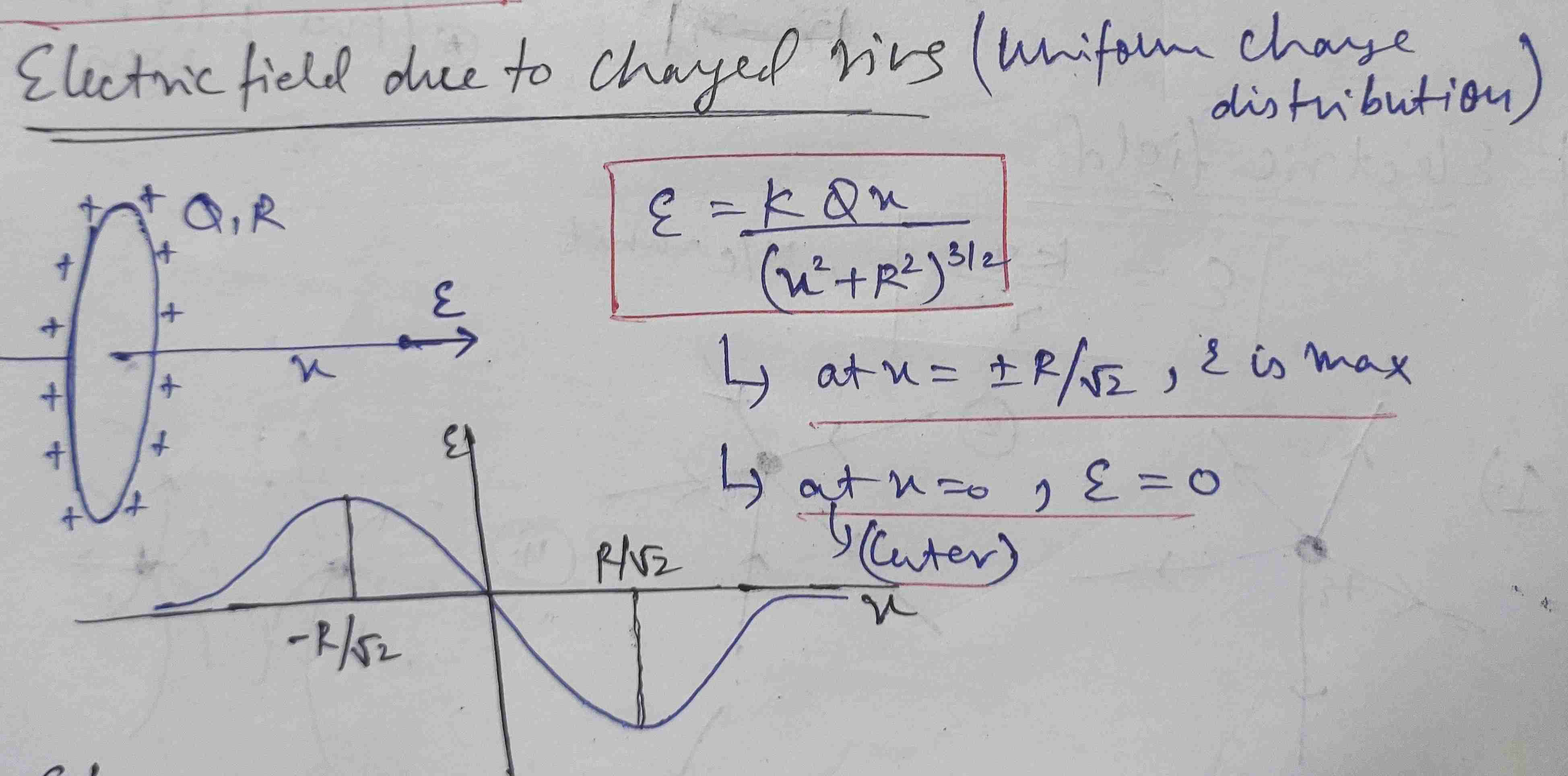
Electric field due to line charge of..
Finite lenght
Semi-infinite lenght
Infinite length
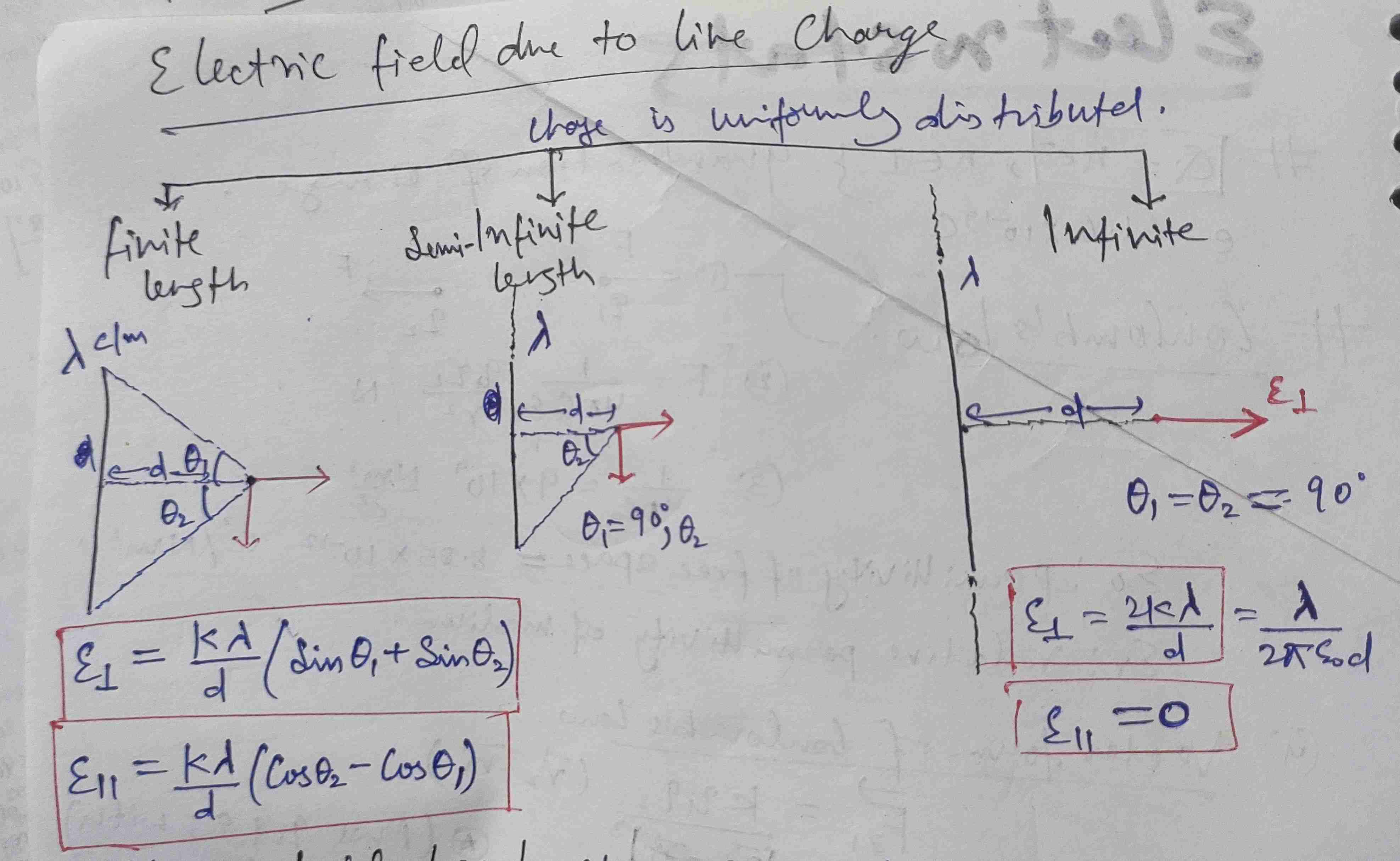
Electric field due to charged disc/sheet
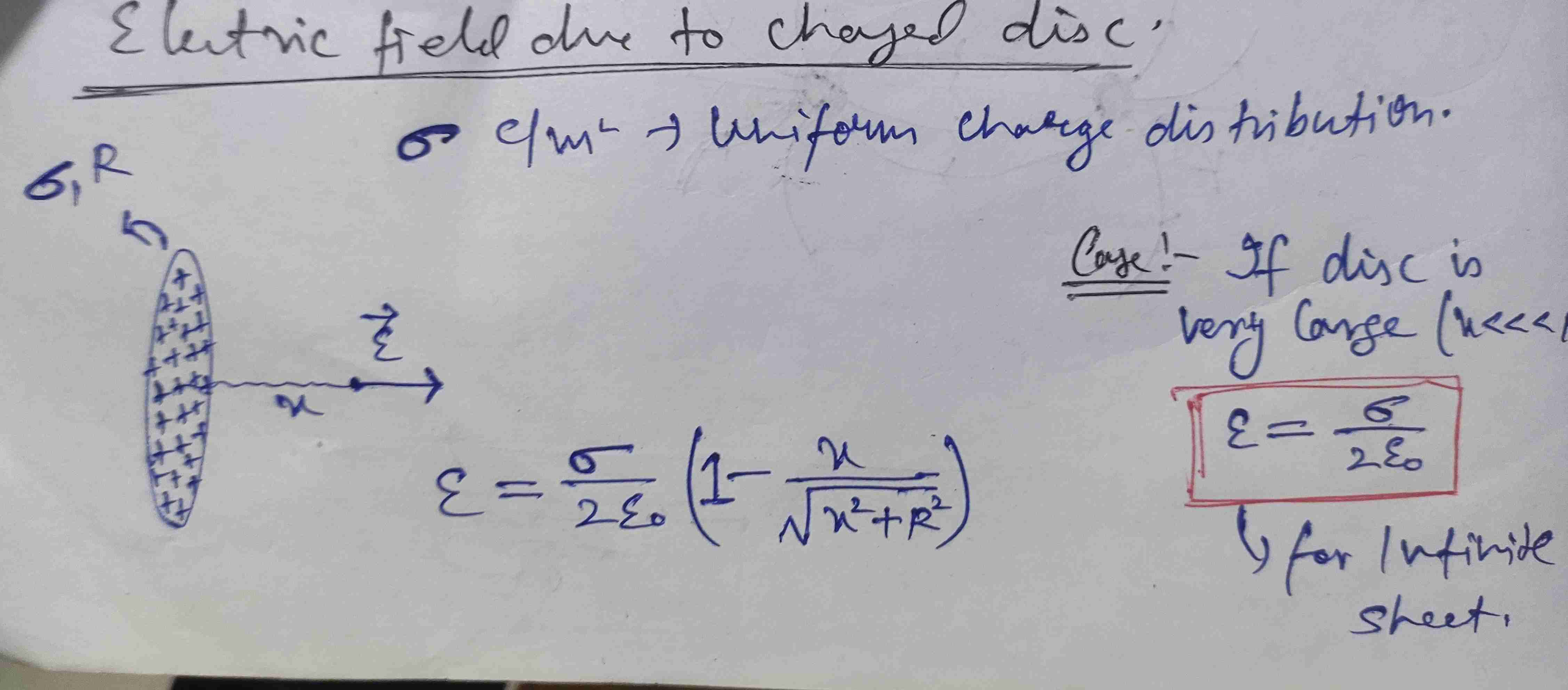
Electric field due to charged sphere
Conductor(behaves as a shell-charges move to surface)
Non-conductor(solid)
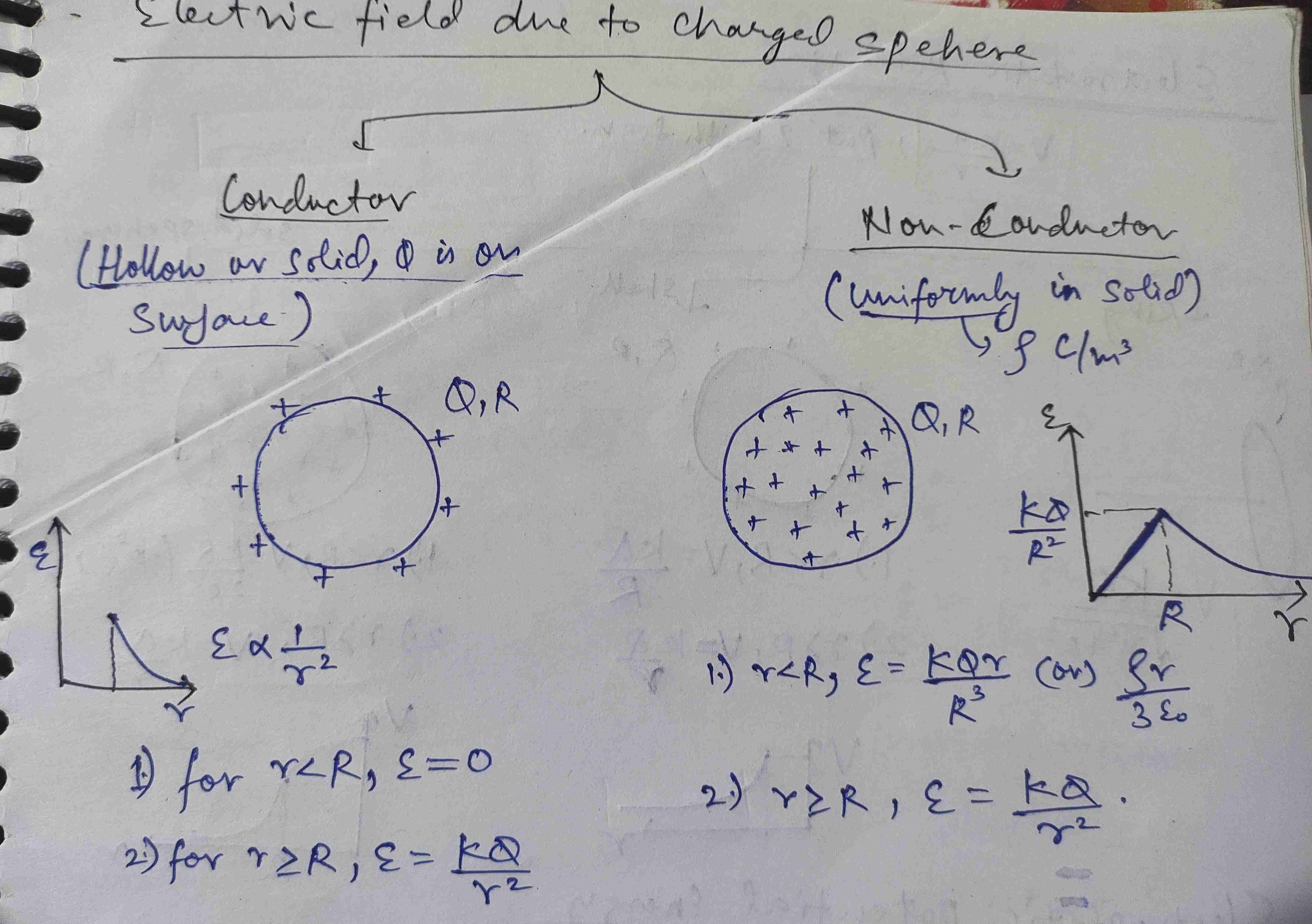
Electrostatic potential due to
Point
Ring
Shell
Solid sphere
Change in P.E per unit test charge
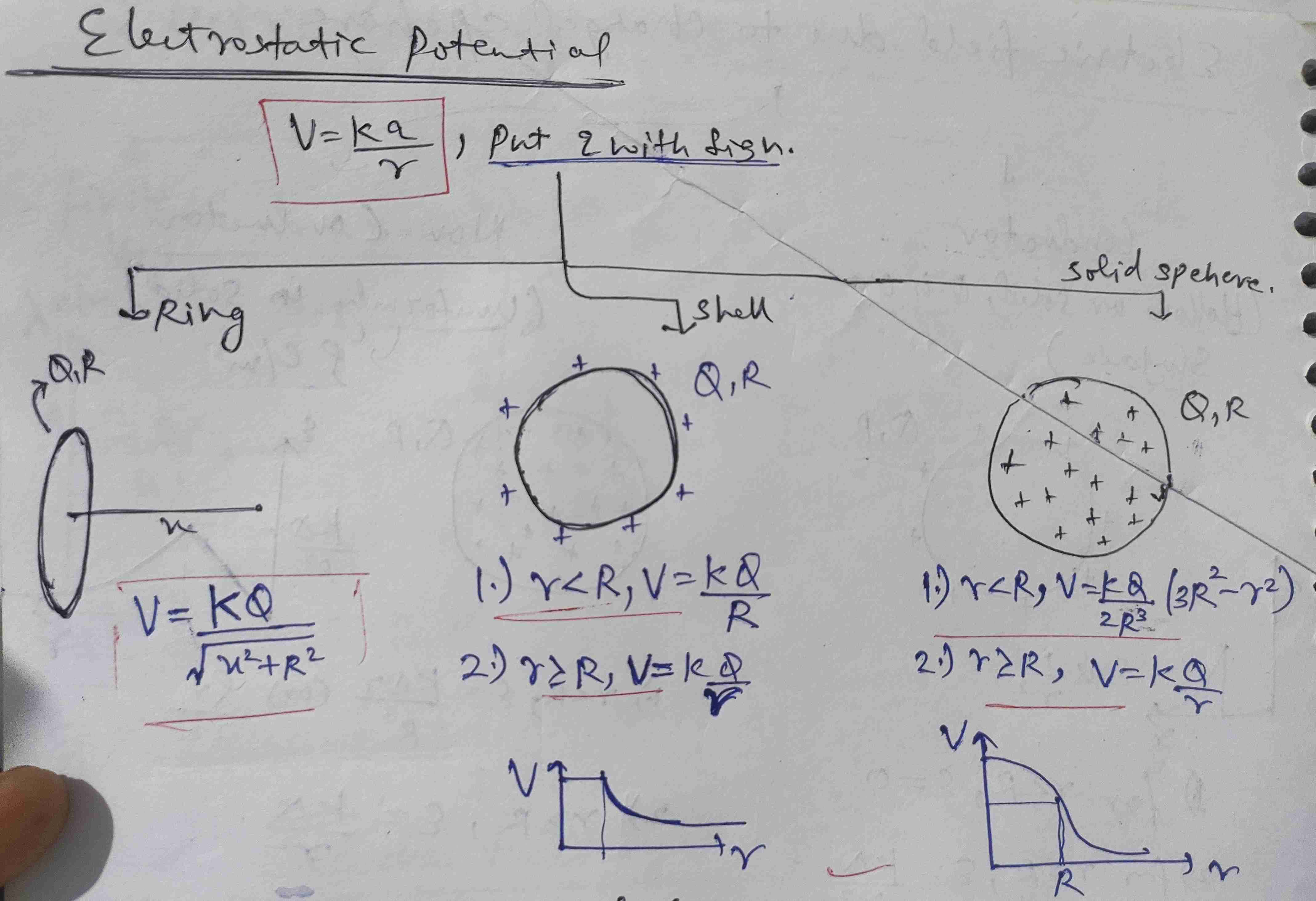
Electrostatic potential Energy due to…
Point charge
Shell
Solid sphere
Note: P.E of shell and solid sphere is called self-energy!!
We define, electric potential energy of the system as negative of the work done by the electric forces as the configuration of the system changes.
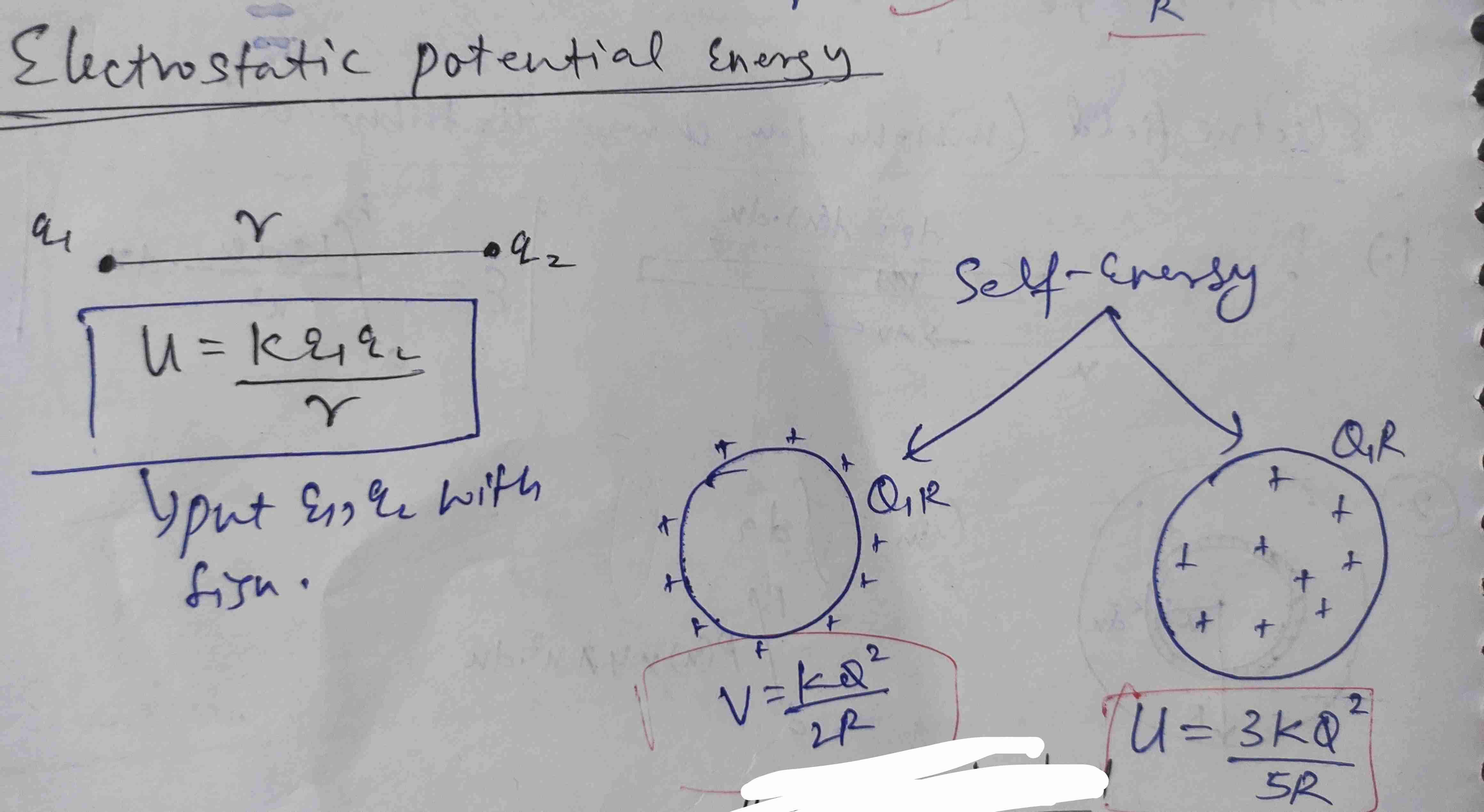
Relation between electric field and potential
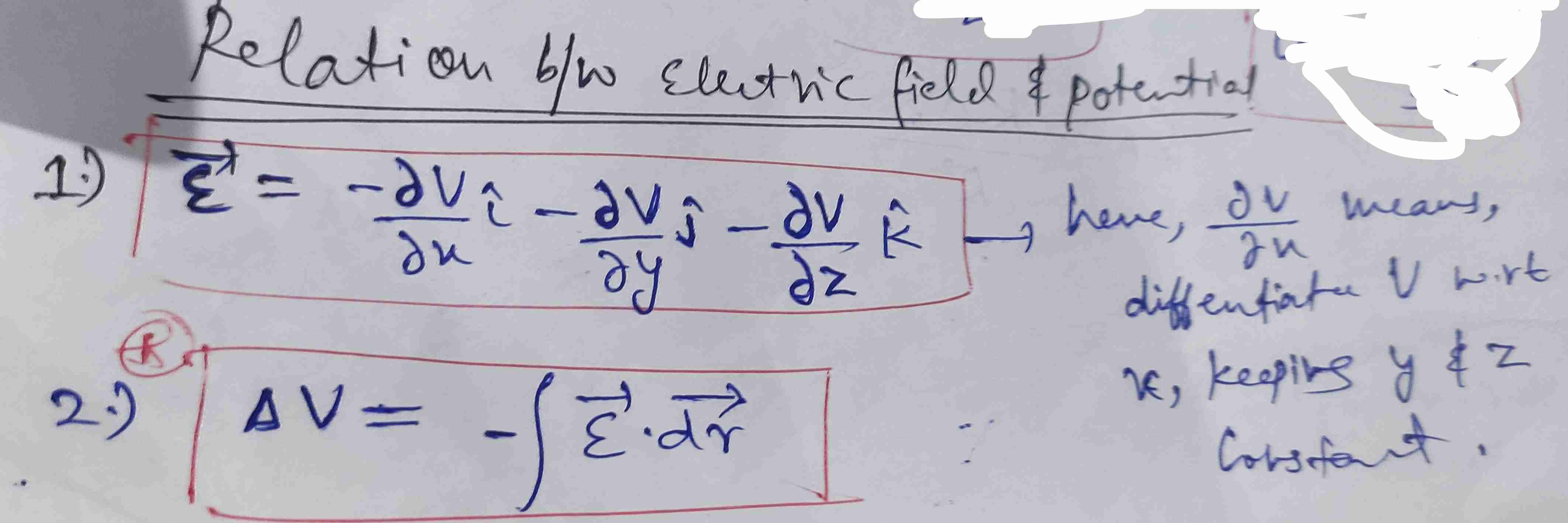
Electric dipole
P=qd
Dirñ is -ve to +ve.
Vector quantity
Electric field due to a dipole
Axial
Equatorial
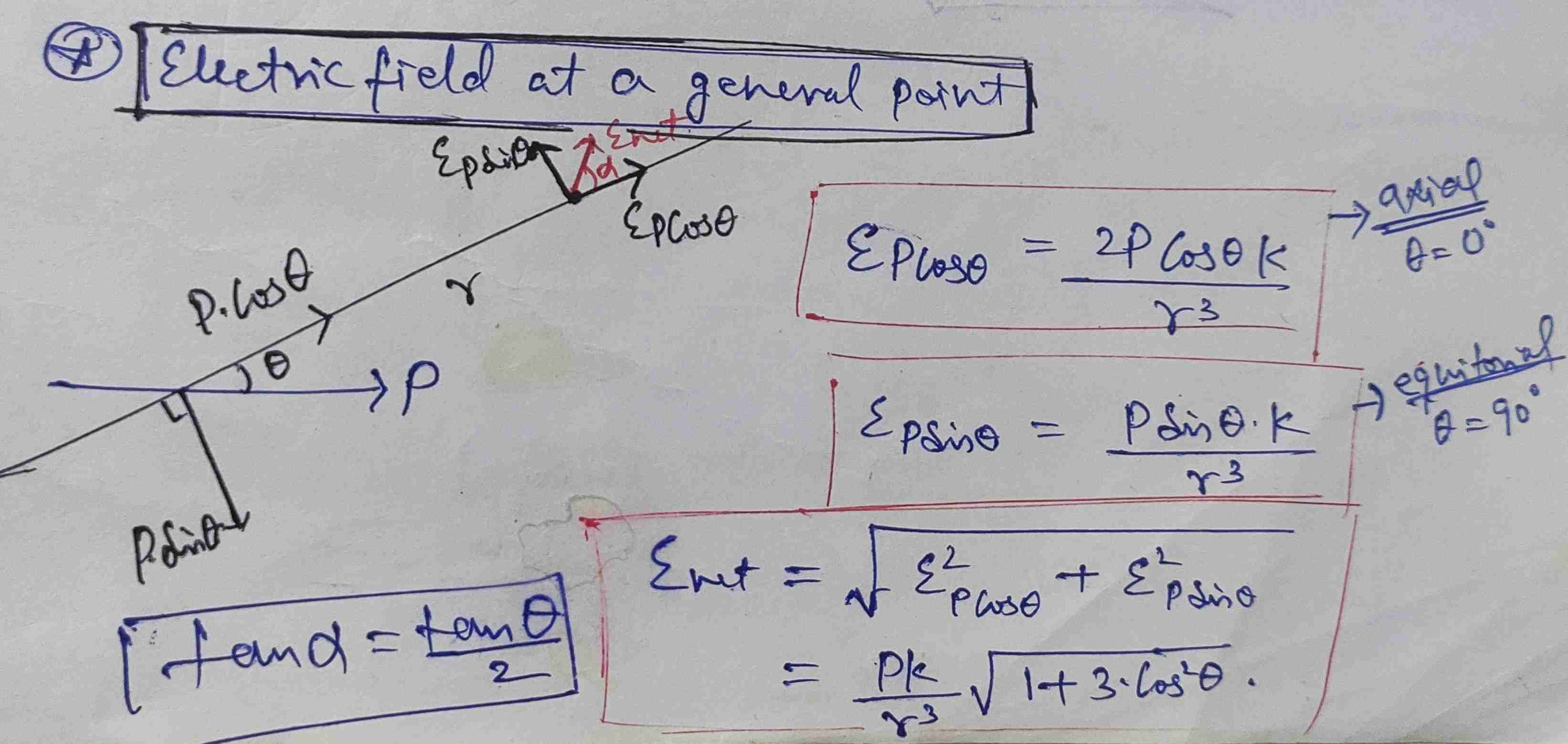
Electric potential due to dipole
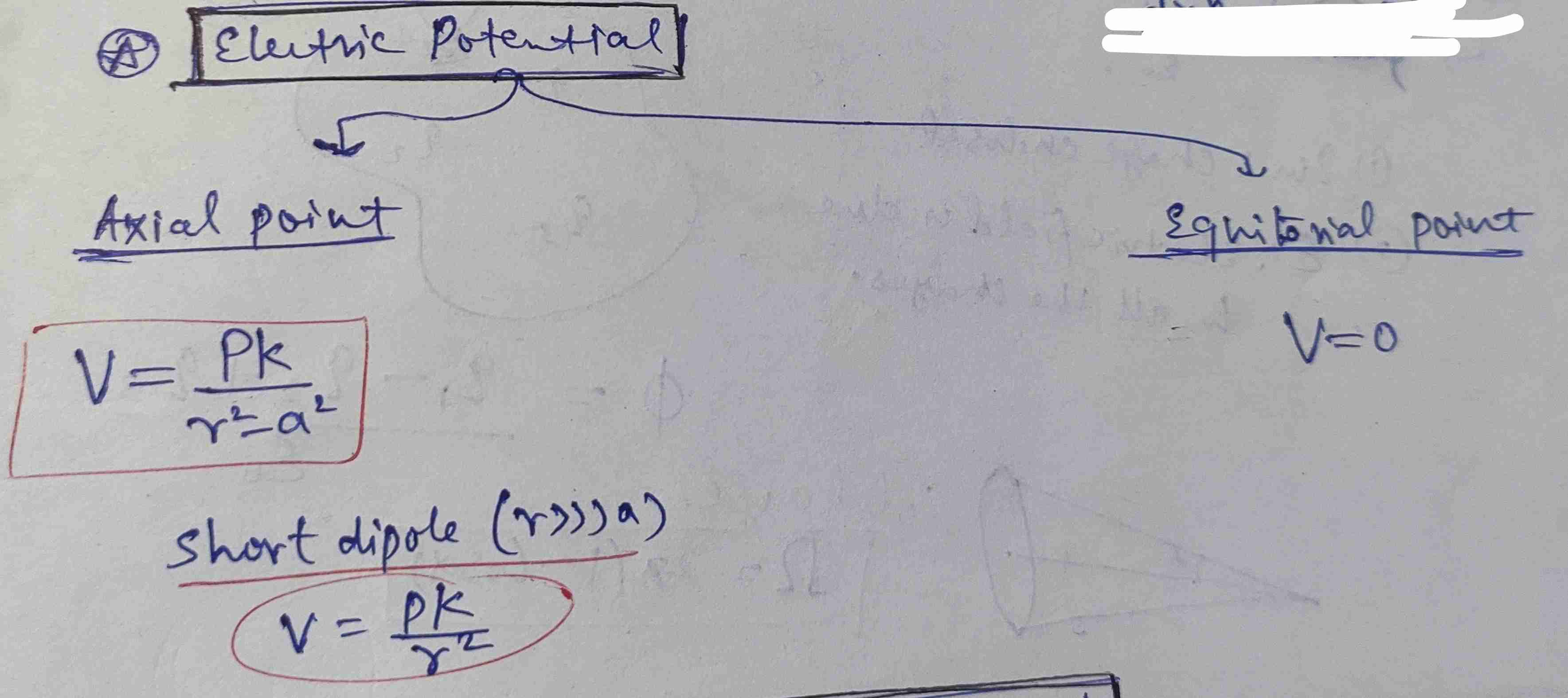
Dipole in uniform electric field
Torque
Potential energy
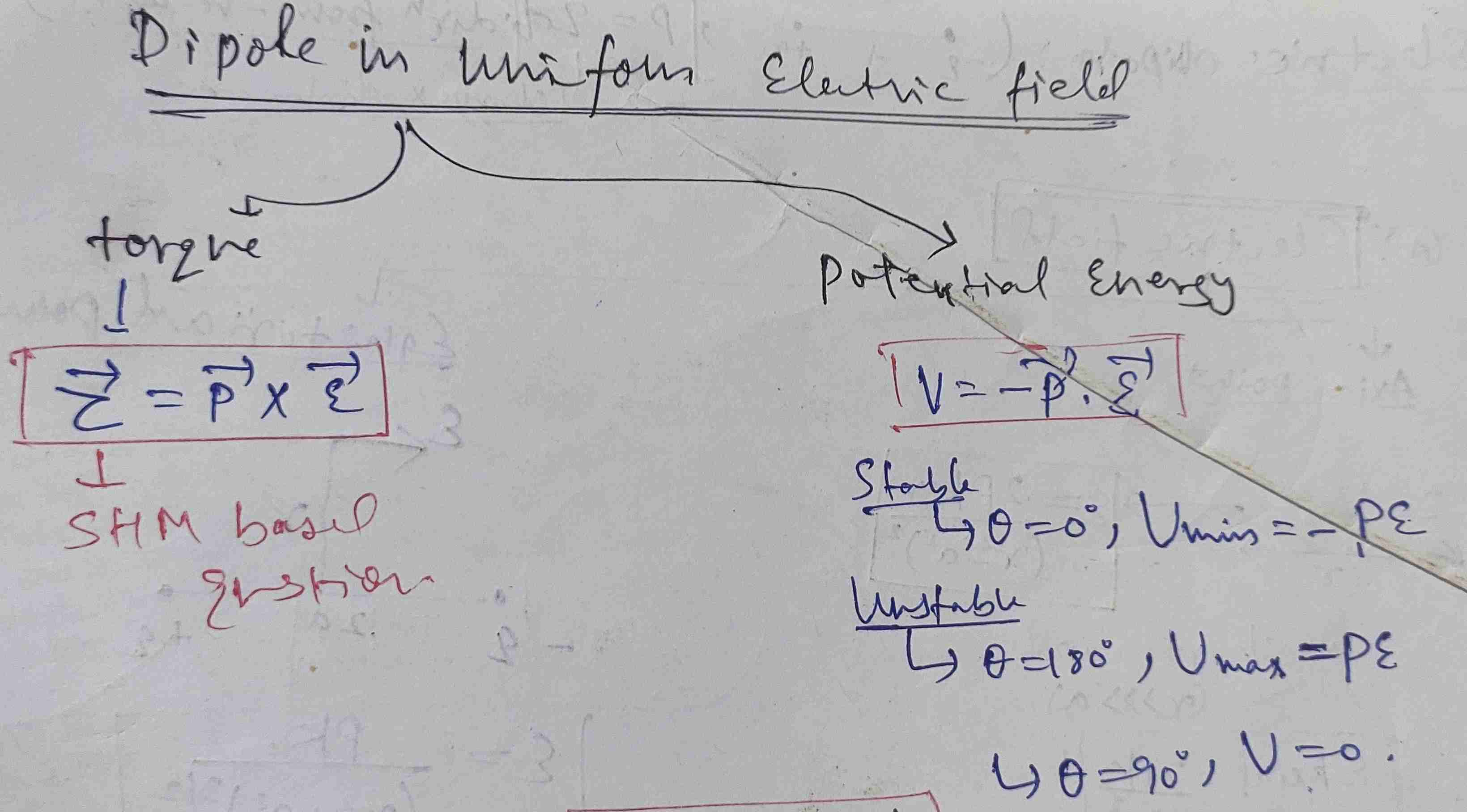
Electric flux and gauss law
Flux is no. Of electric field lines passing through an area
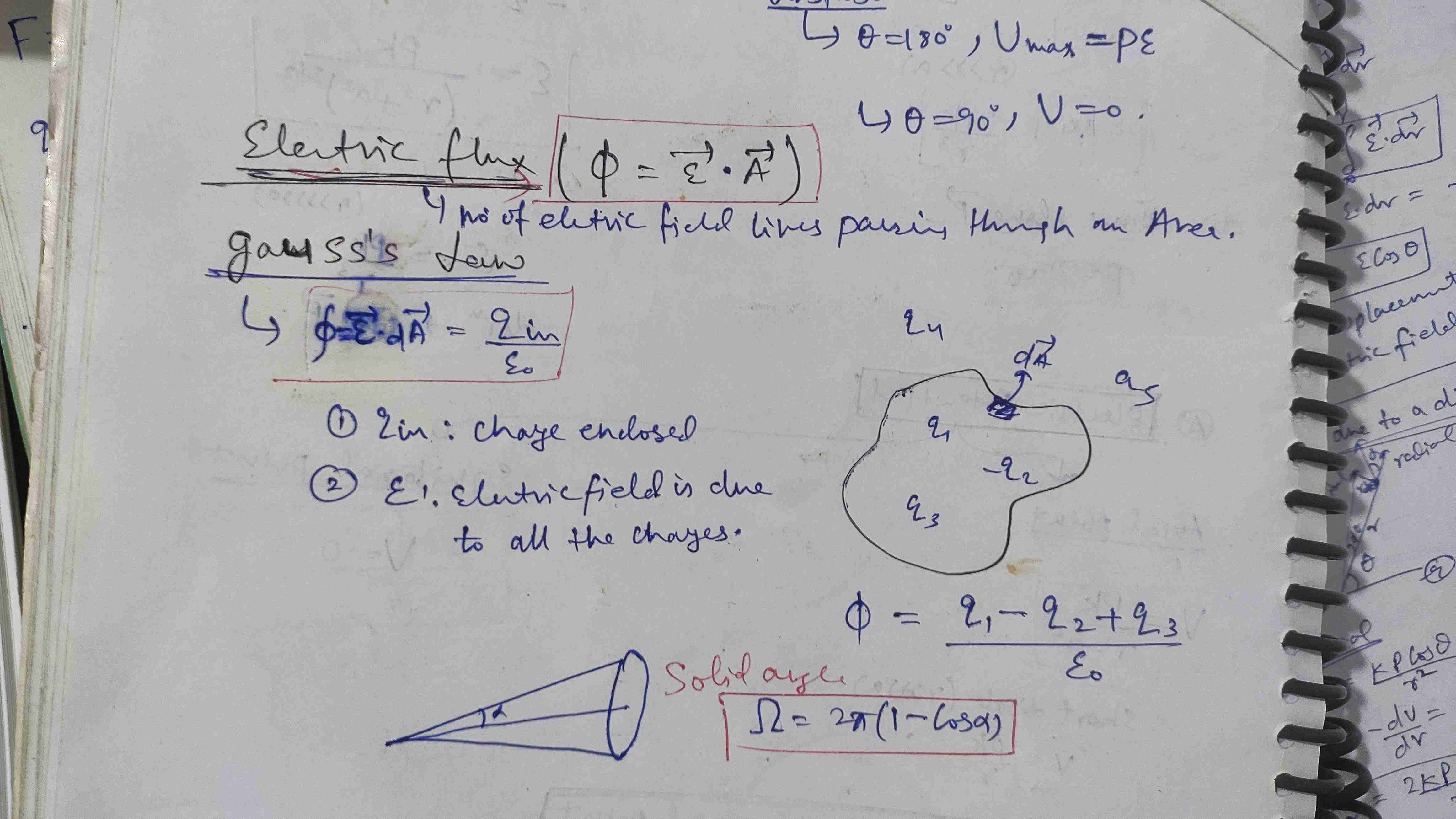
e :charge on an electron ??
1.6 × 10(-19) C
Epsilon(not): permittivity of free space, value??
8.85 × 10^(-12) C²N^(-1)m^(-2)